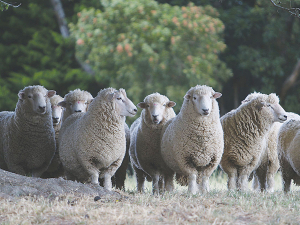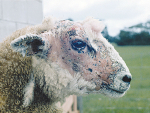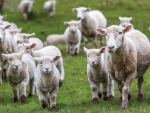A significant breakthrough in understanding facial eczema (FE) in livestock brings New Zealand closer to reducing the disease’s devastating impact on farmers, animals, and rural communities.
Until recently, sporidesmin, the toxin responsible for FE, was thought to be made by the fungus Pseudopithomyces chartarum (formerly Pithomyces chartarum).
However, researchers from AgResearch, Manaaki Whenua, Beef + Lamb New Zealand (B+LNZ) and Livestock Improvement Corporation (LIC) have shown that few Pse. chartarum strains appear capable of making sporidesmin, and a new species, Pseudopithomyces toxicarius, is the primary sporidesmin producer, providing a clearer understanding of the disease’s causes, and paving the way for more effective control strategies.
Facial eczema, caused by sporidesmin produced by the fungus Pse. toxicarius, has cost New Zealand’s economy an estimated $332 million annually.
The study to better understand the fungus associated with FE, which began before the launch of the B+LNZ Eliminating Facial Eczema Impacts (EFEI) programme, is now an important part of the programme’s ongoing efforts to combat FE. By identifying the specific species responsible for FE, researchers have made a crucial advancement to inform where the fungus has now spread and how it can be better managed.
Dan Brier, general manager of farming excellence at B+LNZ, emphasised the significance of the findings.
“Facial eczema has been a long-standing challenge for farmers. This research is a vital step toward understanding the fungus and ultimately eliminating its impact,” says Brier.
“Identifying the species responsible gives us a clearer foundation for developing more accurate diagnostic tools and effective management practices. This collaboration highlights the importance of working together to solve this issue, and we’re proud to contribute to this breakthrough.”
Dr Bevan Weir, senior scientist at Manaaki Whenua and lead author says the breakthrough is the result of years of hard work and dedication from research teams and the farming community.
“Identifying Pseudopithomyces toxicarius as the primary cause of facial eczema is a critical step forward and a testament to the commitment of everyone involved.”
Christine Voisey, AgResearch, and lead author says that working on this project has been one of the most rewarding experiences of her career.
“There is still much to learn about the biology of Pseudopithomyces, but this research brings us closer to developing tools that will help mitigate the impacts of facial eczema on New Zealand’s farmers.
“We’re grateful to the farmers who supported us by providing samples for this vital research.”
Dr Cara Brosnahan, principal scientist in animal health research at B+LNZ and co-author points out that FE is not just a disease; it’s a burden on many farmers and their livelihoods.
“This research is an essential leap forward, giving us the knowledge we need to tackle the problem head-on. By understanding the fungus behind the disease, we will be able to empower farmers with knowledge and better tools to safeguard their stock and secure their futures,” says Broshnan.
This research confirms that while some species of Pseudopithomyces do not produce the toxic compound sporidesmin, Pse. toxicarius, which resembles Pse. chartarum closelyand is easily misidentified, is the primary species associated with FE.











